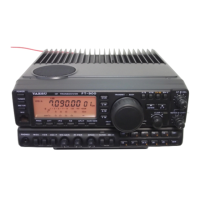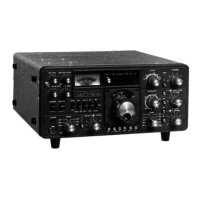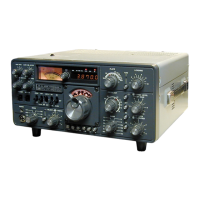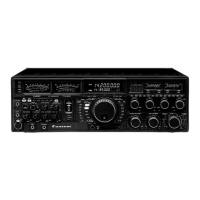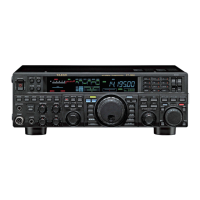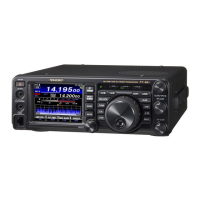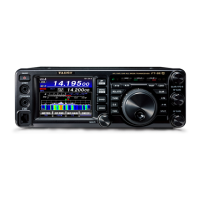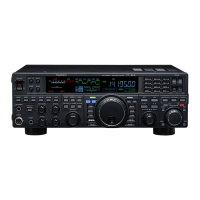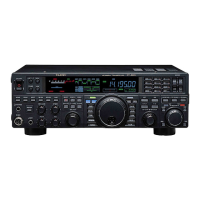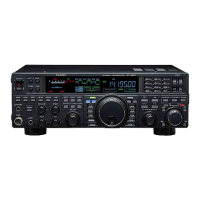48
FT-90R OPERATING MANUAL
SCAN UP
Activates Scanning toward higher frequency/memory channel.
SCAN DN
Activates Scanning toward lower frequency/memory channel.
RPTR
Selects Repeater Shift direction.
REVERSE
Reverses Repeater Uplink/Downlink frequencies.
T. BURST
Activates 1750 Hz Tone Burst.
TX PWR
Allows setting of the transmitter power level.
3. Rotate the MAIN DIAL knob to select another programmable key or button to
modify, if desired, and make your selection from the above list.
4. Press and hold in the key for 1.5 second to save the new setting and
exit to normal operation.
Note:
The function of the
[
VFO/MR
]
key is fixed on the
[
VFO/MR
]
selection.
DCS Code Inversion
The DCS system was first introduced in the commercial LMR (Land Mobile Ra-
dio) service, where it is now in widespread use.
DCS uses a codeword consisting of a 23-bit frame, transmitted (subaudible) at a
data rate of 134.4 bps (bit/sec). Occasionally, signal inversion can result in the
complement of a code being sent or received. This prevents the receiver squelch
from opening with DCS enabled, as the decoded bit sequence would not match
that selected for operation.
Typical situations that might cause inversion to occur are:
m Connection of an external receiver preamplifier.
m Operating through a repeater.
m Connection of an external linear amplifier.
Note that code inversion does not mean that any of the above listed equipment is
defective! In certain amplifier configurations, the output signal (phase) is inverted
from the input. Small signal or power amplifiers having an odd number (1, 3, 5,
etc.) of amplification stages may result in inversion of a transmitted or received
DCS code.

